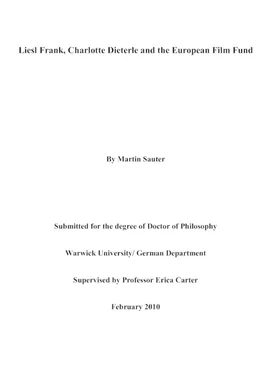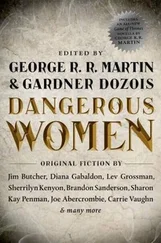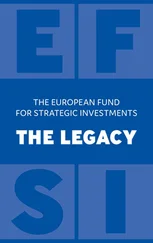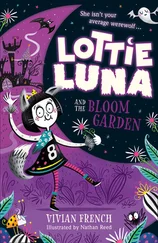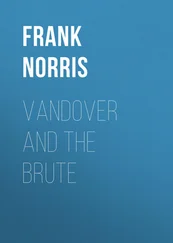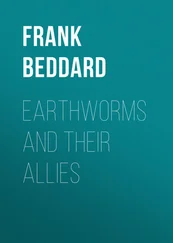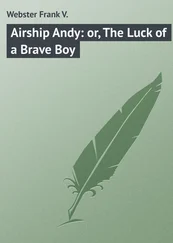Having scrutinised the existing literature on exile, I identified two persistent gaps. One of them is the absence of women. Peter Gay has already observed that, ‘very few of [the exile women] had ever really been remembered’ (Gay in Quack 1996: 354). Although Gay’s comment dates from 1995, little has changed since. This gap is all the more discernible in the light of the sheer number of books, studies, articles, and so on, that have been written on often prominent, exiled, male, film artists settling in Hollywood. Very few of these, however, mention the presence and achievements of women, conveying the impression that women were simply absent and that fleeing Nazi Germany was something that concerned only men. ‘No one’, Peter Gay has justly observed, ‘cared much about Mrs. Lion Feuchtwanger or Mrs. Herbert Marcuse or Mrs. Albert Einstein’ (Gay in Quack 1995: 354). Yet Liesl Frank, in a letter to Marta Mierendorff, wrote that ‘[...] women usually had an easier time adapting [to life in exile]’, 28a claim corroborated by Sabine Quack, who, in Between Sorrow And Strength - Women Refugees of the Nazi Period (New York/ NY: Cambridge University Press, 1995) writes that ‘refugee women were better able to cope [with exile] than refugee men were’ (Quack in Quack 1995: 9).
Quack’s study is one of the few discussing the role women played in émigré circles in general and in refugee organisations in particular. Another is Andreas Lixl-Purcell‘s, Women Of Exile - German-Jewish Autobiographies Since 1933 (Westport/ CT: Greenwood Press, 1988). Although not concerned with exile women in Hollywood per se, both books constitute a pioneering effort in a neglected field insofar as they make women a visible agent in the topic of exile of German Jews. Lixl-Purcell’s book consists of biographies of several women, with a focus on their flight from Nazi Germany and their early years in exile. In a parallel to the lives of Liesl Frank and Charlotte Dieterle, who are at the centre of my own inquiry, the biographies of the women in Lixl-Purcell’s book also ‘confront the reader with provocative arguments against conformist models of identity’(Lixl-Purcell 1988: 6), for, as we shall see, exile not so much forced, as offered these women opportunities to assume roles previously deemed inappropriate. Unlike the majority of books available on exile men, none of the women featured in Lixl-Purcell’s book are famous in any way. They are, rather, ‘ordinary’ women describing in their own words how the exile experience changed their lives.
Lixl-Purcell’s study, although over twenty years old, has spawned surprisingly few related analyses, which is one of the reasons why it is still significant today. Another reason is, of course, the continuing preoccupation of scholars with the Holocaust and its consequences, one of which was exile. Approaching the topic of exile through biography, Lixl-Purcell’s method echoes that of many exile researchers and also served as a blueprint for my own examination. Furthermore, the relevance of Women Of Exile lies in the fact that analogously to Liesl Frank and Charlotte Dieterle, the women at the centre of Lixl-Purcell’s study, were confronted with ‘the recognition that the culturally prescribed role models offered no solutions to the problems of their lives [and thus] convinced many women of exile to experiment with radically new models of political behaviour’ (Lixl-Purcell 1988: 6).
Similarly to Lixl-Purcell, Sybille Quack also examines the lives of ordinary women who fled Nazi Germany. Her study includes several eyewitness reports of the exile experience such as Elizabeth Marum Lunau’s on the ‘Arrival at Camp de Gurs‘, or Rachel Cohn’s on ‘Women Émigrés in Palestine’. The main focus lies on the effect exile had on these women and the lives they led - or were able to lead - in their adopted country. Neither Lixl-Purcell nor Quack offer any insight on the role exile women played in Hollywood and in its émigré community. Quack, however, does acknowledge the importance ’refugee organisations [played] in settling refugees’ (Quack 1995: 6). Hence, several contributions in Quack’s study examine the input of women in organisations such as, for instance, the National Council of Jewish Women. In another parallel to my own investigation, Steven M. Lowenstein, in ‘Women‘s Role in the German-Jewish Immigrant Community’, argues that, ’[the] participation [of women within the congregational sphere] was generally behind the scenes and, on the surface at least, did not challenge the male predominance in official communal functions’ (Lowenstein in Quack 1995: 172). This, as we shall see, mirrors the role Liesl Frank and Charlotte Dieterle played in the EFF. Thus, while both Lixl-Purcell and Quack disregard the Hollywood exile community and its various aid organisations, their findings nevertheless proved useful insofar as they corroborated my own.
A second gap in the literature on German-Jewish exile, and particularly in film history, is the role of refugee organisations in Hollywood’s émigré community. This includes the involvement of women in these organisations which, as became apparent during my own research, was crucial. As pointed out above, literature on exile has a tendency to concentrate on, generally famous - male - individuals, their lives and/ or their creative output following their exile, be that literature or film, while the impact of the numerous refugee organisations, and the role they played within the émigré circle, has thus far received scant attention. Yet, archival data shows that the overwhelming majority of exiles were members of organisations, founded as a response to the political situation in their home country. Many of these provided fellow refugees with financial aid and came to their rescue when foreign governments chose to turn a blind eye to their plight. Examining these organisations offers valuable insight into the exile experience as a whole, not to mention the political situation in the host country. Evidence also suggests that many exiles were approached for help by refugee organisations. More often than not, the request was of a financial nature, but often also to rally support for political causes. Hence, these organisations were of considerable significance in the lives of the refugees, tying them together in their fight against Nazism; more than this, they were an - often last - link to their home country.
Besides the EFF, organisations the exiles actively participated in during their US exile included the American Guild for German Cultural Freedom, the German Jewish Club of 1933 -later renamed, for fear of anti-German sentiment following the US entry into WWII, as the
Jewish Club of 1933 - the American Committee for Christian German Refugees and the Hollywood Anti-Nazi League. We know but little about how these organisations operated on a day-to-day basis, let alone anything about their members and their influence on the political stage. Investigating these organisations, however, offers the researcher new information on the life of the refugees during their exile, how they interacted, their social life, and their political involvement.
One notable contribution to the research on refugee organisations is Klaus Taeubert’s essay, ‘Im Dienste der Volksfront: Hollywood Now’ (In: Helmut G. Asper (ed.). Wenn wir von gestern reden sprechen wir über heute und morgen - Festschrift für Marta Mierendorff zum 80. Geburtstag. Berlin: Sigma, 1991), in which he discusses the party organ of the Hollywood AntiNazi League (HANL), Hollywood Now. Using the surviving issues of Hollywood Now as his starting point, Taeubert recapitulates the three and a half years - October 1936 to February 1940 -that the paper was in existence and evaluates its significance and purpose. As Taeubert makes clear, the refugees not only contributed to Hollywood Now, ‘which was published at slightly irregular intervals’ (Taeubert in Asper 1991: 161), but one of the weekly’s main concerns was the coverage of events in their erstwhile home country. He highlights the close links between the refugee network, HANL itself, and Hollywood Now, whose chief priority, besides ’the defence of democratic institutions’ (Taeubert 1991: 160), was to ‘raise awareness about the crimes committed within Hitler’s fiefdom [and as such] offered a surprising, today easily verifiable, exactness regarding all areas of German life’ (Taeubert in Asper 1991: 161). 29Hence, Taeubert’s findings underscore my claim regarding the importance of organisations in the life of the refugees during their exile. Taeubert states that, ‘the density of the information network suggests a close collaboration [of members of HANL] with anti-fascists abroad and in the Nazi-occupied territories, and these have never been [discussed or researched]’ (Taeubert 1991: 161). Taeubert’s essay is an important step in the right direction; however, HANL was only one of many refugee organisations. Thus it is safe to say that refugee organisations as a whole remain a field yet to be fully explored by exile researchers.
Читать дальше
